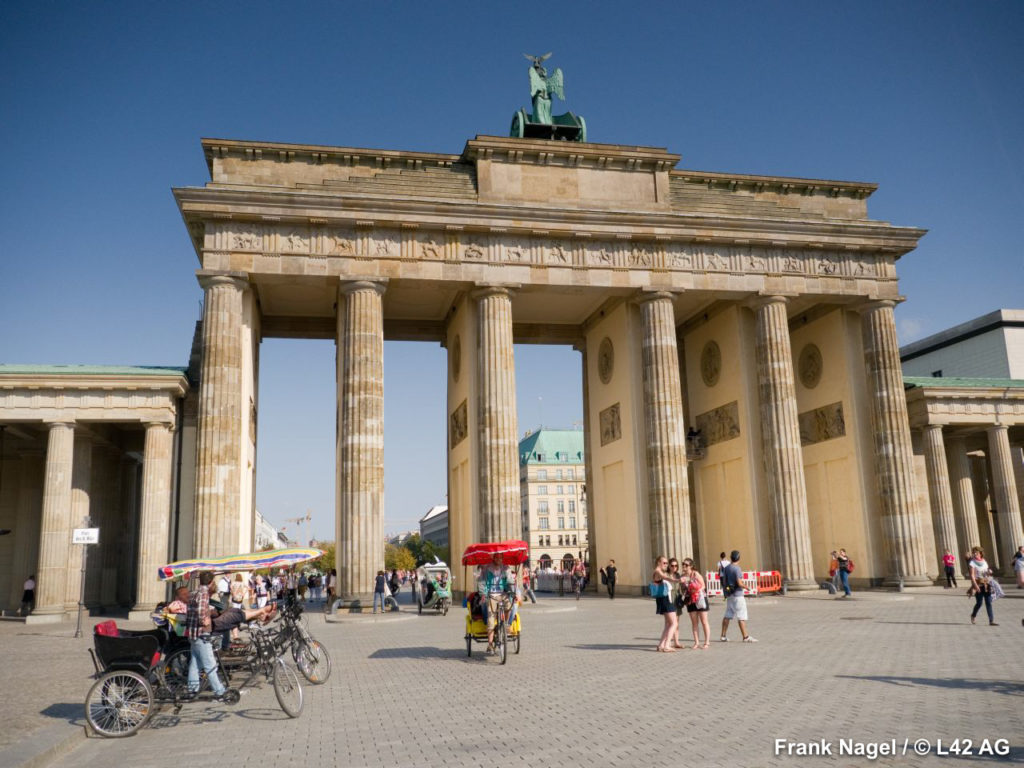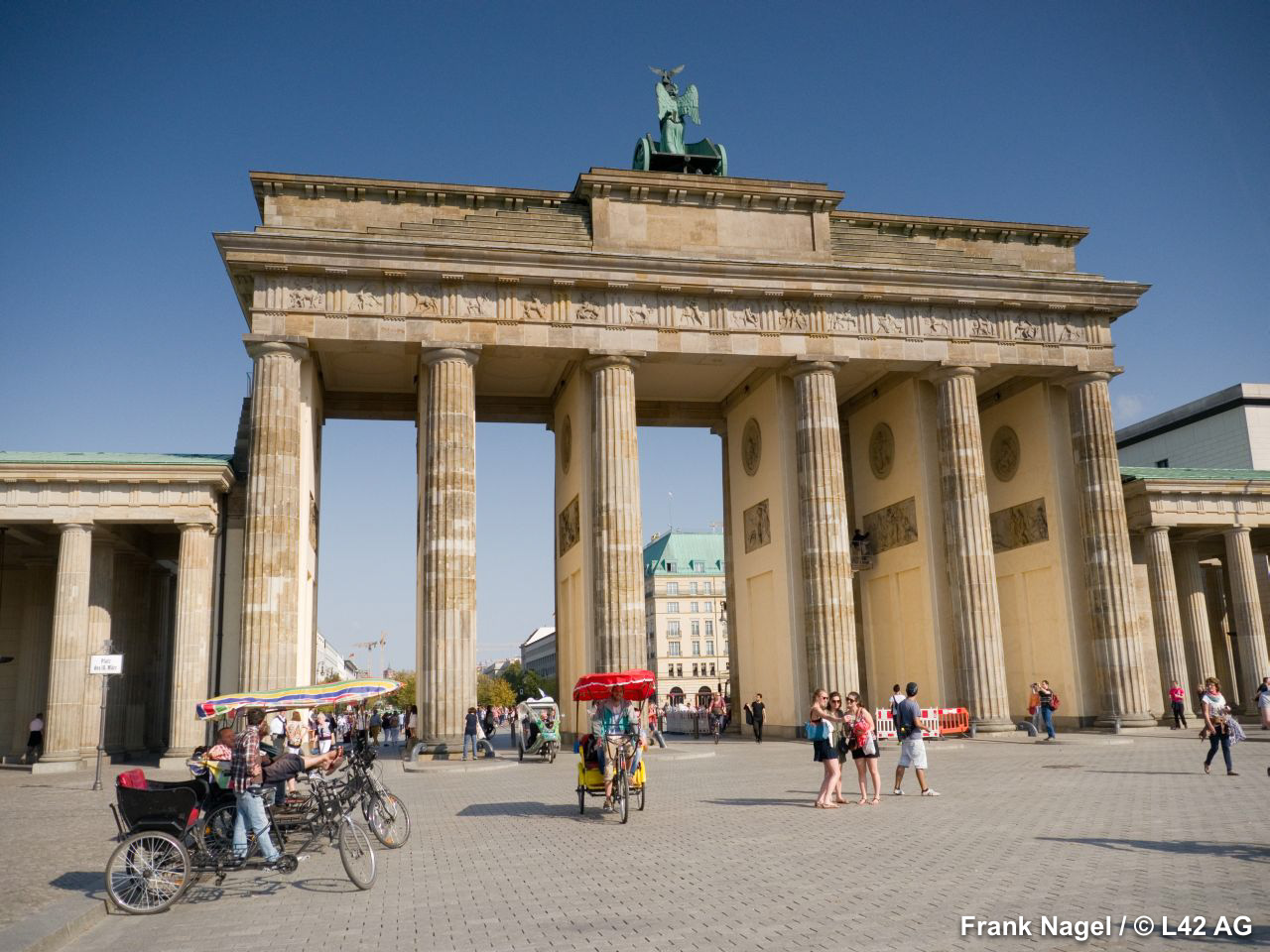
The Brandenburg Gate is without any doubt a familiar symbol throughout much of the world, but what much of the world is not familiar with is its new subway station, which is truly a very special place. It is very well taken care of and has been built to stimulate tourists’ curiosity. Its brand new, sleek, gray columns and its luminous glass ceiling make it a veritable museum on the rails. “Brandenburg Gate” is written in gold across a light charcoal colored wall while the benches and trashcans are silver – but, to be honest, its cleanliness and order are a bit like that of an operating room. Be that as it may, the history of the Brandenburg Gate (and with it, the very history of Germany itself in miniature) is told here through a series of soft ivory, brown, green, red, and blue paintings under a mother-of-pearl light together with a series of incredible black-and-white photographs.
The Brandenburg Gate was constructed in 1791. In 1806 Napoleon entered into the city while in 1871 the unity of the Reich under Wilhelm I was celebrated. In 1914 we see the parades for Wilhelm II and the enthusiasm surrounding Germany’s entrance into the war while in 1918 sailors marching before the Berlin City Palace. In 1933 and in 1939 we can see the lugubrious and powerful Nazi parades; in 1945 the bombed-out ruins of the Reichstag and Soviet tanks. At that point in time a field hospital was erected in front of the Brandenburg Gate and vegetable plots were planted before the Reichstag. On June 17, 1953, there came the first major demonstrations calling for German reunification. The most striking image, however, is perhaps that of the Brandenburg Gate partially covered by the Wall.
For forty years from the West you couldn’t see anything but the top-most edge of the Gate, while all the rest was covered by that absurd gray concrete curtain and all around it were soldiers guarding the immense no-man’s-land which functioned as a security zone. From 1961 onwards the Gate was the symbol of the division of the two Germanies and all of the visiting heads of state passed by. Presidents and queens were immortalized waving from their limousines with both the Brandenburg Gate and the Wall at their backs. Elizabeth II, John F. Kennedy, Konrad Adenauer, and Willy Brandt, Mikhail Gorbachev…
The night of November 9, 1989, and the following day we see the crowds taking apart the Wall with picks and hammers and climbing up to see while the soldiers formed long cordons along the curving path of the Wall itself.
The final photographs show the 1992 marathon and the 2006 World Cup: images of shared joy.
Translated by Alexander Booth

